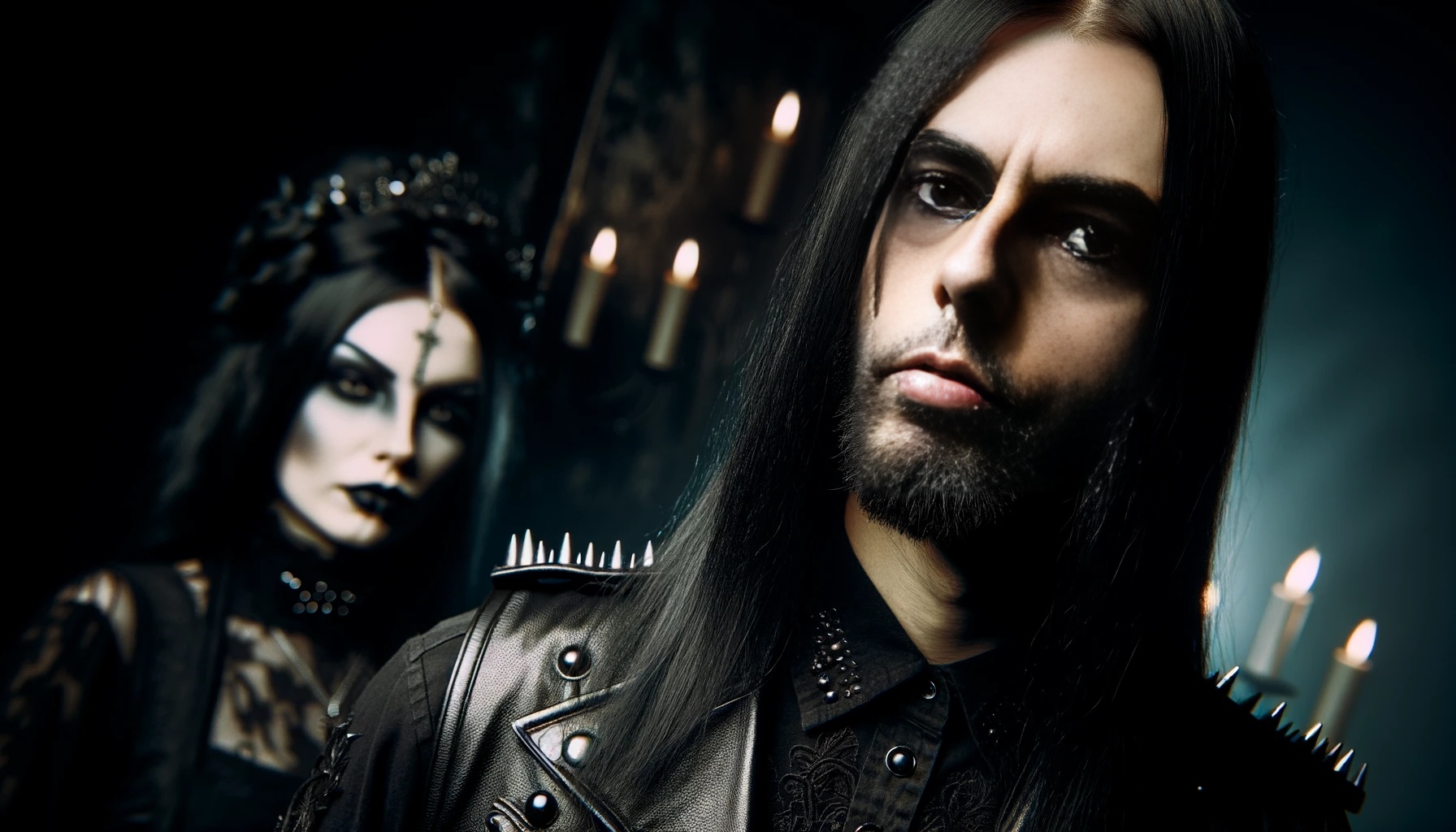In the shadowy corners of the rock world, where the macabre dances with the decibels, lies the chilling realm of shock rock. This genre isn’t just about music—it’s an experience, a theatrical explosion of horror and rock ‘n’ roll that engages more senses than just auditory. Fans of this dark spectacle are treated to a blend of elaborate performances, disturbing visuals, and eerie lyrics that delve deep into the darkest parts of the human psyche and the supernatural world. Today, we summon the spirits of the most legendary monsters of shock rock, those bands whose echoes reverberate chillingly across the eardrums and straight into the soul.

Alice Cooper: The Godfather of Shock Rock
Alice Cooper, born Vincent Damon Furnier, is often hailed as the architect of shock rock. With his gruesome stage antics including guillotines, electric chairs, and fake blood, Cooper transformed rock concerts into theatrical horror shows. His 1975 album “Welcome to My Nightmare” is not just a collection of songs but a journey through a twisted mindscape, with tracks like “Only Women Bleed” and “Steven” offering a glimpse into a haunted spectacle. Cooper’s influence is monumental, setting the stage for many acts to follow.

Kiss: Knights in Satanic Service?
Although more associated with glam rock, Kiss dabbled deeply in the shock rock pool. With their iconic makeup, pyrotechnics, and blood-spitting performances, Kiss turned their concerts into a circus of the night. Rumors (debunked as myths) swirled about the acronym KISS standing for “Knights in Satan’s Service,” which only fueled their notorious reputation. Albums like “Destroyer” and songs like “God of Thunder” resonate with the themes of power and the paranormal, making them a staple in the shock rock genre.

Marilyn Manson: The Antichrist Superstar
Emerging in the 1990s, Marilyn Manson became the poster child for shock rock’s resurgence. With a persona that’s as controversial as it is captivating, Manson’s performances are a spectacle of grotesque imagery and defiant lyrics. His album “Antichrist Superstar” is a harsh critique of society, laden with references to nihilism and dystopia. Manson’s music and performances challenge societal norms and provoke thought, making him a modern-day prophet of the shock rock gospel.

GWAR: Interplanetary Warriors
GWAR takes shock rock to another dimension, literally. Portrayed as warriors from outer space, GWAR’s live shows are notorious for their graphic and over-the-top violence, which often involves the decapitation and dismemberment of effigies and copious amounts of fake blood spraying into the audience. Their music, while secondary to their performances, is a thrashy, punk-infused metal that perfectly complements their chaotic stage presence.

Rob Zombie: The Horror Maestro
Rob Zombie seamlessly blends horror and music, drawing heavily from horror films and eerie iconography. Formerly of White Zombie, his solo career skyrocketed with albums like “Hellbilly Deluxe.” Zombie’s music videos and films are a testament to his vision of a horror-soaked world, with “Living Dead Girl” and “Dragula” being quintessential shock rock anthems that explore macabre themes with an irresistible groove.

Rammstein: Teutonic Pyromaniacs
Hailing from Germany, Rammstein might not traditionally fit the shock rock label, but their pyrotechnic-laden performances and controversial themes definitely push them into its territory. Songs like “Mein Teil,” inspired by a disturbing real-life event, showcase the band’s ability to meld industrial metal with theatrically dark visuals, making their live shows a breathtaking experience of fire and music.

Death Metal: Morbid Resonance
While death metal may primarily focus on extreme music rather than theatrical performance, its influence on the aesthetic and attitude of shock rock is undeniable. Bands like Cannibal Corpse and Morbid Angel bring a level of intensity and horror to their music, with graphically violent lyrics and guttural vocals that create an atmosphere of dread and brutality. This genre pushes the boundaries of music’s ability to shock and unsettle listeners, using speed, complexity, and themes of death and decay.
Death metal bands often incorporate elaborate album art and stage setups that feature imagery of zombies, gore, and apocalyptic visions, which visually aligns them with shock rock’s theatrical nature. The visceral impact of their performances, both audibly and visually, makes death metal a crucial component of the shock rock universe.

Norwegian Black Metal: The Frostbitten Spectacle
Norwegian black metal, with its origins shrouded in the cold mists of Norway, offers a uniquely chilling strand of the shock rock tapestry. Bands like Mayhem and Burzum have contributed not only with their music but with their notorious histories that include church burnings and even murder. This genre is steeped in an ethos of anti-establishment and often embraces themes of paganism, satanism, and the occult, making it one of the more controversial yet fascinating aspects of extreme music.
The live performances are often ritualistic, featuring corpse paint, use of symbols like the inverted cross, and a cold, menacing atmosphere that transports the audience into a world that feels like walking through a dark, ancient forest in winter. The frostbitten grimness of Norwegian black metal creates a haunting spectacle that makes it a significant part of the shock rock dialogue.
These subgenres, with their dark themes and intense music, are integral to the broader narrative of shock rock. They add depth and diversity to the shock rock scene, appealing to those who seek the thrill of horror not just in visuals and performances but in the very sound and essence of the music.
Incorporating elements of death metal and Norwegian black metal not only broadens the reach of shock rock but also deepens its cultural impact. It shows how music can explore themes of darkness, rebellion, and the supernatural, making it a powerful medium for artistic expression in the rock world.

Honorable Mentions
Bands like Slipknot, with their aggressive music and masked performances, and King Diamond, with his falsetto vocals and satanic imagery, also deserve a nod in this list. Each has contributed uniquely to the culture and enduring appeal of shock rock.
Shock rock is more than just music; it’s a cultural phenomenon that taps into the deepest fears and fascinations of its audience. It challenges societal norms, confronts comfort zones, and offers an escape into a world of theatrical horror. The genre has evolved but the core remains the same: to shock, to provoke, and to entertain.
For those daring enough to explore further, these bands promise an experience that transcends ordinary musical performances, making every concert a journey into the heart of darkness.
Be sure to catch some of these thrilling performances live for a full experience of shock and awe. And for those who breathe the chill of night and live the rock lifestyle, check out more on my socials at Social Media and don’t the home page.




